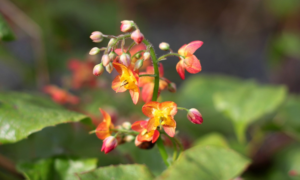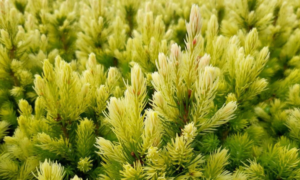We independently research, review, and recommend the best products. If you buy something through our links, we may earn a commission. Learn more.
Are you looking to give your outdoor plants a fresh start? Repotting is a simple and effective way to rejuvenate your plants and help them thrive. Read on for a step-by-step guide to repotting outdoor plants.
Contents
How Often Should You Repot Outdoor Plants?
As a general rule, outdoor potted plants should be repotted every year or two. However, your plants will often let you know when they need a little extra care by exhibiting certain behaviors, such as dry soil or a lack of growth.
To determine if your plants are ready for a new pot, keep an eye out for the following signs:
- Dry or unhealthy-looking soil
- Stagnant growth
- Roots visibly protruding through the soil or drainage holes
- Overgrown roots or a crowded root system
Choosing the Right Pot Size
When selecting a pot for your plant, it’s important to choose the right size. A pot that is too small will not allow enough room for the roots to grow, while a pot that is too large may hold too much moisture and lead to root rot. As a general rule, aim for a pot that is one size up from the plant’s current pot.
Selecting Potting Soil
When repotting outdoor plants, it’s important to use a high-quality potting soil suitable for outdoor use. Avoid using soil from the ground, as it may not provide the necessary nutrients and drainage for potted plants. Look for potting soils that are well-draining and contain a mix of compost, peat moss, and perlite or vermiculite.
Planting in Soil or Garden Beds
If you have the space, you may want to consider planting your outdoor pot plants directly in the ground. To do so, follow these tips:
- Choose the best location for your plant based on its needs and projected size.
- Prepare the soil by adding compost and digging a hole at least as deep as the plant’s current pot and twice as wide.
- Soak the plant thoroughly before removing it from its pot and leave the roots intact unless they are tightly bound.
- Place the plant in the hole and fill it halfway with soil.
- Add water to remove any air bubbles before finishing with the remaining soil.
- Add mulch around the plant and increase watering for the first four weeks or until you see new growth.
When to Repot Outdoor Plants
For the best results, aim to repot your outdoor plants during the spring or summer when they are most actively growing. However, if your plant is in distress during cooler months, it’s okay to repot it to help it recover.
How to Repot Outdoor Plants
Follow these steps to repot your outdoor plants:
- Gently squeeze the nursery pot to loosen the plant and reduce the risk of damage.
- Check the plant’s roots for any signs of root rot, such as black or foul-smelling roots. If necessary, trim off the bottom third of the roots with a sharp knife or pruning shears.
- Gently loosen the remaining roots and snip through any tangled ones using a root hook or pruning shears.
- Choose a pot that is appropriate for the size of the plant and has drainage holes. A pot that is too small will not allow enough room for the roots to grow, while a pot that is too large may hold too much moisture and lead to root rot.
- Use a high-quality potting soil suitable for outdoor plants. Avoid using soil from the ground, as it may not provide the necessary nutrients and drainage for potted plants.
With a little bit of care and attention, your repotted outdoor plants will thrive and bring life to your outdoor spaces. Regular repotting will help your plants grow strong and healthy, and can even extend their lifespan. Happy repotting!








